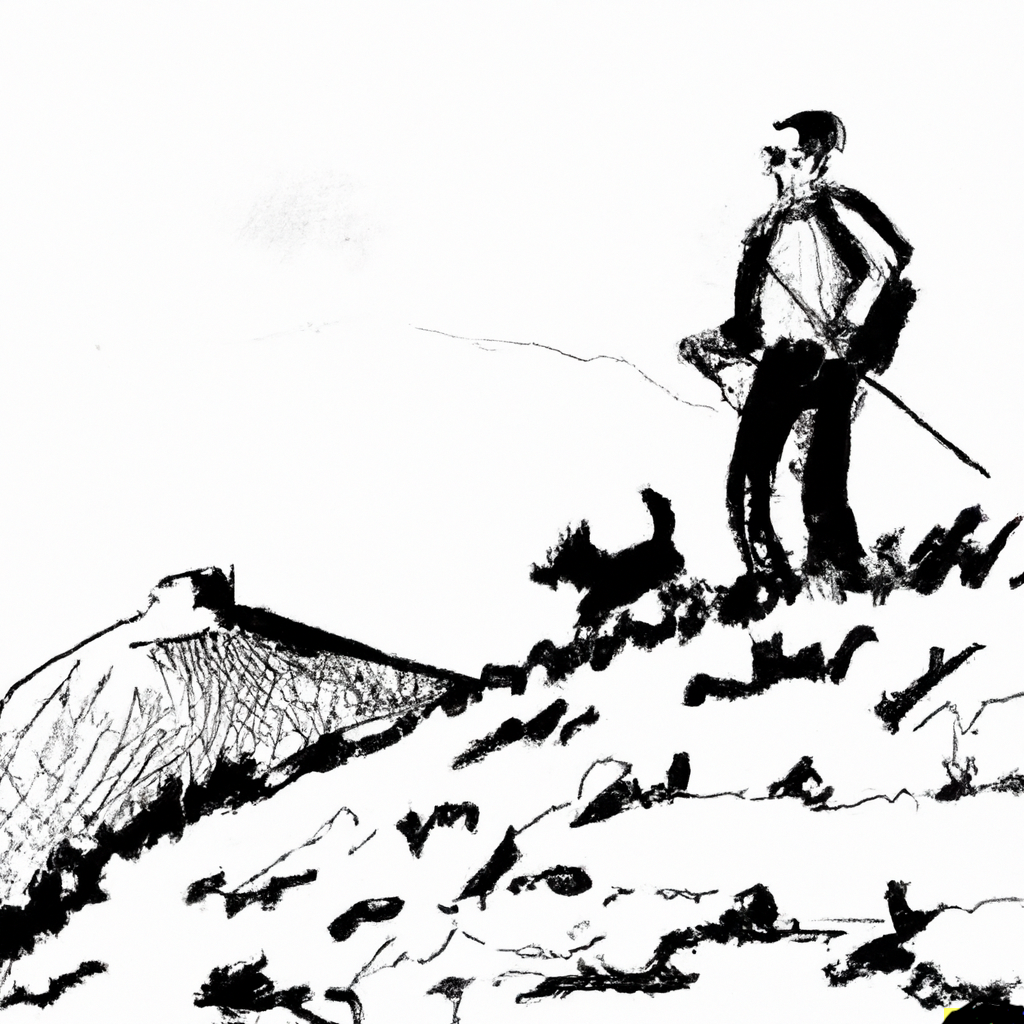Artificial Intelligence and Pest Control
In 2023, the buzzword dominating discussions worldwide was AI, or Artificial Intelligence, hailed for its potential to revolutionize various sectors. With the global market size forecasted to reach nearly US$ 1.85 trillion by 2030, AI's exponential growth is undeniable.
At Rentokil, expert product developers are leveraging AI and digital technologies to transform pest control. Teams of scientists driving new technologies that focuses on connected technology and IoT, introducing the next generation of pest control devices. Through their insights, they explore the promising opportunities AI and digital pest technology offer in enhancing business' pest management strategies.
The integration of digital technologies has brought significant advancements to the pest control industry in recent years. From 24/7 remote monitoring via connected traps to drones applying targeted insecticides in inaccessible areas, innovations like these have reshaped pest control operations. AI and machine learning, combined with intelligent object detection and camera technology, provide invaluable tools for identifying pest activity efficiently. This technology enables real-time monitoring and swift action by frontline technicians, ensuring effective pest management tailored to evolving business needs. Additionally, the sustainability benefits of camera technology are highlighted, with strategic bait placement minimizing chemical usage, promoting public health, and safeguarding the environment. As Rentokil continues to push the boundaries of pest control through innovation, customers can expect enhanced support and more sustainable solutions for their pest management needs.
Hiking with Man’s Best Friend During Tick Season
Ticks pose a year-round threat to dogs, with warmer months increasing their activity. The longer a tick remains attached, the higher the risk of disease transmission, a challenge compounded by ticks' small size in immature stages. When hiking with your dog, particularly in tick-prone areas like wooded or swampy regions, staying on the trail and checking your pet for ticks afterward are essential precautions.
To avoid ticks while hiking, focus on areas where ticks are likely to lurk, such as tall grass and vegetation. Check your dog thoroughly for ticks, paying attention to common hiding spots like under the collar, tail, and between toes. Even with preventative medication, ticks can still attach, emphasizing the importance of consistent vigilance and selecting effective preventatives in consultation with a veterinarian.
While complete avoidance of ticks may be challenging depending on the hiking location, proactive measures can significantly reduce the risk to your dog. By staying informed, employing preventative measures, and promptly removing any ticks found, you can help safeguard your pet against tick-borne illnesses during outdoor adventures.
Where the ticks are most likely to be found -
Black-legged (Deer) Tick -
Black Legged ticks. Deer ticks. Essex county natural and organic tick and mosquito control. Amesbury MA, Newburyport, Newbury, Danvers, Topsfield, Middleton MA, Nrothshore Massachusetts.
The bacteria responsible for Lyme disease in the United States, primarily Borrelia burgdorferi and rarely B. mayonii, are transmitted to humans through the bites of infected ticks, notably the black-legged tick (or deer tick). Black-legged ticks undergo a 2-to-3-year life cycle, progressing through four stages: egg, larva, nymph, and adult. Larval and nymphal ticks become infected with Lyme disease bacteria while feeding on infected wildlife hosts, such as rodents, and can then transmit the bacteria during their subsequent blood meals as nymphs or adult females.
Tick attachment for a significant duration, typically 36 to 48 hours or more, is usually required for the transmission of Lyme disease bacteria. Prompt removal of ticks within 24 hours significantly reduces the risk of contracting the disease. In regions where Lyme disease cases are prevalent, people may encounter infected blacklegged ticks from spring through fall, with nymphal ticks posing a higher risk due to their abundance and small size, often making them difficult to detect. Although adult female ticks can also transmit the bacteria, their larger size makes them more noticeable and easier to remove before transmission occurs.
Prevention of Lyme disease primarily involves avoiding tick bites and promptly removing ticks when found attached to the skin. Awareness of the seasonal activity patterns of black-legged ticks, particularly nymphs during spring and summer, is crucial for minimizing the risk of tick-borne infections. Additionally, recognizing the importance of deer as sources of blood for ticks, although not carriers of Lyme disease bacteria themselves, is essential for understanding tick ecology and disease transmission dynamics.
What Is Integrated Pest Management (IPM)?
Integrated Pest Management (IPM) is a systematic approach aimed at managing pests by incorporating prevention, monitoring, and suppression techniques. The strategy prioritizes non-chemical methods whenever possible to maximize public safety and minimize environmental risks. It encompasses a comprehensive array of pest control measures, including monitoring, sanitation, physical barriers, and the use of natural enemies of pests, alongside judicious use of pesticides when necessary. Massachusetts IPM Council emphasizes the importance of combining various pest control methods to achieve desired pest levels while minimizing reliance on chemical pesticides.
The Massachusetts State Legislature defines IPM as a multifaceted pest control strategy that aims to achieve effective pest management in an environmentally responsible manner. This approach integrates diverse pest control measures to address conditions conducive to pest infestation, such as sanitation and physical barriers, alongside the use of natural pest enemies. The focus is on reducing reliance on chemical pesticides through the judicious use of the lowest-risk options available. Similarly, the Environmental Protection Agency (EPA) underscores the importance of an effective and environmentally sensitive approach to pest management, utilizing a combination of practices informed by current knowledge of pest life cycles and their interactions with the environment.
Do Mosquitoes Serve a Purpose ?
Mosquitoes, often perceived solely as a nuisance to humans, actually serve ecological roles as pollinators and prey for other wildlife. Despite being commonly associated with annoyance during outdoor activities, over 3,500 mosquito species exist, with not all of them posing a threat to humans. Mosquitoes primarily feed on flower nectar, functioning as pollinators akin to bees or butterflies. They transfer pollen between flowers, aiding in fertilization and seed production. While female mosquitoes require blood for egg laying, males solely rely on nectar and do not bite. Additionally, mosquitoes form a vital part of the food web, serving as prey for various wildlife species, including dragonflies, turtles, bats, and birds like hummingbirds, which rely on small insects as a primary food source.
Although mosquitoes fulfill ecological roles, they can carry dangerous pathogens and viruses. When taking necessary measures to control their population around commercial and residential areas, caution is needed to avoid adverse effects on beneficial wildlife.
Spraying pesticides, whether self-applied or through residential mosquito spray companies, can harm bees, butterflies, and other insects that serve as essential food sources for various animals. Focusing on larval control proves to be an effective and environmentally friendly solution. By adopting methods that minimize harm to non-target species, individuals can mitigate mosquito populations without disrupting ecosystems.
While mosquitoes play roles in pollination and the food web, few plant species rely entirely on them for pollination, and there are minimal animal species that solely prey on mosquitoes. Thus, while recognizing the ecological significance of mosquitoes, it remains important to manage their populations responsibly to minimize negative impacts on both human and environmental health.
Tick Season Reminders
Tips to keep away the pests!
Some Helpful Reminders for this coming Tick Season
To prevent tick bites, the Centers for Disease Control and Prevention (CDC) recommends the use of repellents containing DEET, ideally at concentrations between 20% and 30%. It's crucial to adhere to the instructions on the product label diligently. Parents should apply repellents to children, ensuring to avoid areas such as the hands, eyes, and mouth.
Notably, DEET products should NOT be applied to infants. It's advisable to wash off the repellent at the end of the day for safety.
Furthermore, products containing permethrin, such as Repel, are suitable for treating clothing and gear like boots, pants, socks, and tents, offering continued protection even after multiple washes.Aside from direct contact outdoors, ticks can also enter homes by attaching themselves to pets. Engaging with a veterinarian about suitable tick prevention products for pets is important. It's essential to note that while some repellents effectively deter mosquitoes, they may not offer the same level of protection against ticks. Therefore, choosing appropriate repellents targeted specifically for tick prevention is crucial for safeguarding against tick-borne diseases.
For more information visit - Personal protection against Ticks
Warmer Winter - More Ticks
Take back your evenings in the yard!
Massachusetts is experiencing an early emergence of ticks due to a mild El Niño winter, potentially spreading serious diseases such as Lyme disease and babesiosis. Normally, ticks become prevalent in mid-spring and not late winter, but even in wintry Minnesota, deer ticks were out in early February, according to pest-control officials in the Twin Cities.
Ticks to watch out for!
The American dog tick and the black-legged tick, also known as the deer tick, are among the species to watch out for in Massachusetts. Detecting tick-borne illnesses can be challenging since symptoms may not manifest for up to 30 days. Early symptoms often mimic those of a cold or flu, necessitating prompt medical attention to prevent more severe complications, as emphasized by the Centers for Disease Control and Prevention (CDC).
Lyme disease, prevalent across various regions including the Midwest, Northeast, and Mid-Atlantic, is the most common tick-borne illness. In Massachusetts, reported tick-borne diseases include anaplasmosis and babesiosis. Pets, particularly dogs, are also susceptible to similar tick-borne illnesses. To mitigate the risk of tick bites, individuals are encouraged to take precautionary measures such as wearing protective clothing, using tick-specific insect repellents, treating outdoor gear with permethrin, and seeking veterinary advice for tick treatments for pets.
In case of tick encounters, prompt removal is crucial. Using fine-tipped tweezers, individuals should grasp the tick as close to the skin's surface as possible and pull upward with steady pressure to avoid leaving mouth parts embedded. Methods like nail polish or petroleum jelly are ineffective for tick removal. After extraction, thorough cleaning of the bite area and hands with rubbing alcohol or soap and water is recommended to minimize infection risks. Regular tick checks, especially after outdoor activities, coupled with immediate showering, contribute to effective tick bite prevention strategies outlined by the CDC.








